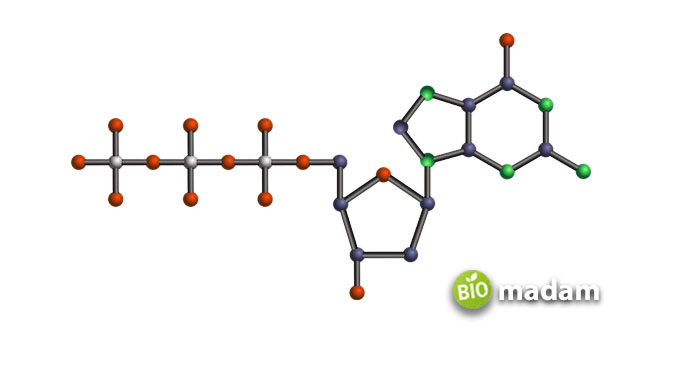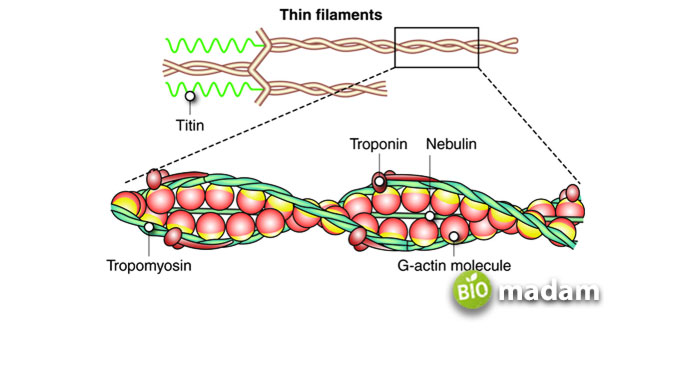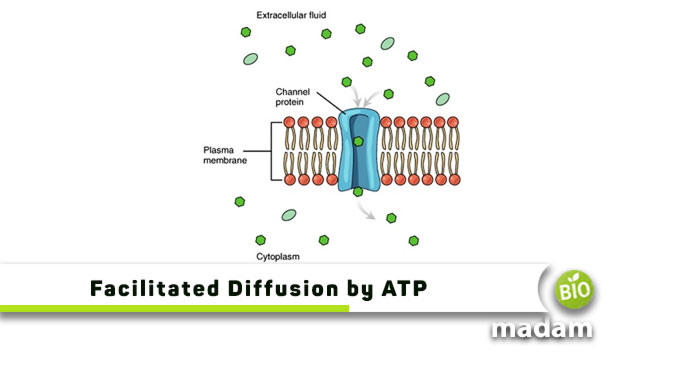Different types of diffusion actively take part in body processes, thus, is an important biological phenomenon. It allows the movement of molecules from one region to another that typically takes place due to the difference in concentrations of substances on both sides. Diffusion can be active or passive, depending on the direction of movement. Facilitated diffusion is a type of passive diffusion that allows molecular movement along the gradient. So, does facilitated diffusion use energy?
Keep reading this article to know if facilitated diffusion uses energy or not.
What is Facilitated Diffusion?
The term “facilitates diffusion” comes from the Latin words “facilis” and “diffusionism.” Facilis translates to “make” or “do,” while diffusionism means “pouring forth.” Facilitated diffusion is also known as “latent intervened transport” or “worked with transport.”
Facilitated diffusion is used to transport materials materials across a biological membrane from an area of higher concentration to a lower concentration, obeying Fick’s law. It uses transport proteins to move these substances across the membrane. Factors like concentration, temperature, and molecule size affect the process of facilitated diffusion.
This movement of substances across the membrane is critical to decide what enters the cells and what goes out. It also contributes to maintaining equilibrium within the cell.
The movement of ions, water molecules, gasses, and amino acids are examples of facilitated diffusion.
Does Facilitated Diffusion Use Energy to Help Molecules Move?

In the race of simple vs facilitated diffusion, both are the passive types of diffusion that allow the movement of substances along the concentration gradient (higher to lower concentration). Thus, it does not require chemical energy. Instead, the process uses kinetic energy like other types of passive diffusion.
Which Proteins are Involved in Facilitated Diffusion?
As mentioned, facilitated diffusion uses proteins to move substances to maintain equilibrium. The process utilizes three types of proteins that help in transporting materials:
Carrier Proteins
These proteins carry molecules across the membrane by altering their conformation. The change in their conformation propels the substances to the other side of the membrane. Carrier proteins in the cell membrane are transmembrane proteins spread across the entire plasma membrane.
Channel Proteins
Channel proteins are another type of transport protein, yet they differ from other proteins. They are like pores in the membrane that allow the passage of molecules, such as water and small ions. Channel proteins or pores are named on the type of molecule they carry across them. For example, those involved in water transport are called aquaporins; sodium transporters transport sodium ions, and so on.
Gated Proteins
Gated proteins act as gates in the membrane, allowing specific molecules to pass through them based on unique stimuli. The stimulus could be chemical, mechanical, physical, or temperature-based.
Which Proteins Facilitate Diffusion of Specific Molecules?
Every type of protein in the cell or plasma membrane contributes to the movement of a specific type of molecules into and out of the cell. The role of different kinds of transport proteins in facilitated diffusion is as follows:
- Carrier proteins propel glucose across the membrane
- Channel proteins transport ions and polar molecule
- Integral proteins move amino acids and other substances

Examples of Transport by Facilitated Diffusion
Numerous processes within the cell and the movement of substances across the cell membrane occur through diffusion. Some of the cellular processes that utilize facilitated diffusion are:
Oxygen and Carbon Dioxide Transport
Facilitated diffusion contributes significantly to the movement of gasses, such as oxygen and carbon dioxide, across the cell membrane. Hemoglobin and myoglobin are carrier proteins in red blood cells and skeletal muscles that transport gasses. Due to concentration and pressure differences, they facilitate the diffusion of oxygen, carbon dioxide, and carbon monoxide.
Glucose Transport
Glucose movement across the cell membrane is essential to life, and transport proteins enable the process. The carrier proteins in the plasma membrane push the glucose molecules across the membrane after conformation. The process occurs through the action of sodium-glucose cotransporters and facilitative glucose transporters.
Sodium-glucose cotransporters are present in small intestines and release carbohydrates through facilitated diffusion. Meanwhile, the facilitative glucose transporters allow bidirectional glucose movement across the cell membrane.
Similarly, the amino acid permeases enable the transport of amino acids into the cell from the bloodstream.
Ion Channels
Despite being small molecules, ions cannot pass through the lipid bilayer without gated proteins due to their charge. The proteins that allow particular ions through the membrane are also called ion channels. These channels or pumps enable the movement of ions along the concentration gradient quickly without chemical energy.
The sodium-potassium channel is a common example of ion channels. When the extracellular region has a high concentration of sodium ions and the cytoplasm contains potassium ions in excess, they maintain a resting potential. A slight change in the voltage opens the sodium channels, facilitating the movement of ions across the membrane; the potassium channels follow suit.
Aquaporins
As we mentioned earlier, aquaporins are a type of carrier protein that facilitate the movement of water molecules across the plasma membrane. They play a critical role in diabetes insipidus, as the disease can result from aquaporin mutations.
Difference between Simple and Facilitated Diffusion
Diffusion is categorized into two types: active and passive. Active diffusion uses energy to push molecules across a concentration gradient. At the same time, passive diffusion moves substances from a higher concentration to a lower concentration.
Simple and facilitated diffusion are passive diffusion types that do not require chemical energy. Simple diffusion occurs in open space without a membrane and does not require any other molecules for transport.
On the other hand, facilitated diffusion occurs across the membrane using transport proteins. While most substances passing through the membrane using facilitated diffusion are small ions and molecules, they require proteins to facilitate movement.
The Bottom Line
Facilitated diffusion is one of the types of passive transport. It refers to the movement of molecules along the concentration gradient from higher concentration to lower concentration. Thus, the answer to “Does facilitated diffusion use energy?” is no. Facilitated diffusion does not use chemical energy to move particles. Instead, it uses kinetic energy. The particles move across the cell membrane with the help of transport proteins.
FAQs
What is the importance of facilitated diffusion in the body?
Facilitated diffusion contributes majorly to maintaining the water concentrations through aquaporins and maintains equilibrium within the cell. It also plays a critical role in sodium-potassium channels with the help of ion channels.
What is the difference between active transport and facilitated diffusion?
Active transport and facilitated diffusion differences makes them variating. Active transport is a type of molecule transport that uses energy to move molecules against the concentration gradient. Contrarily, facilitated diffusion is a type of passive diffusion that does not require energy as it moves molecules along the concentration gradient.
Does simple diffusion require energy?
No, simple diffusion is another type of passive transport and does not require energy. It contributes to the movement of low-weight molecules along the concentration gradient without needing help.

Anna has completed her degree in Pharmacy from the University of Hawaii. She is serving as a research assistant in a pharmaceutical company. She had a great interest in writing blogs, traveling to different parts of the US, and trying delicious recipes in her spare time.

